Uncategorized
30 Foods So Beautiful They Don’t Seem Real
Published
3 months agoon
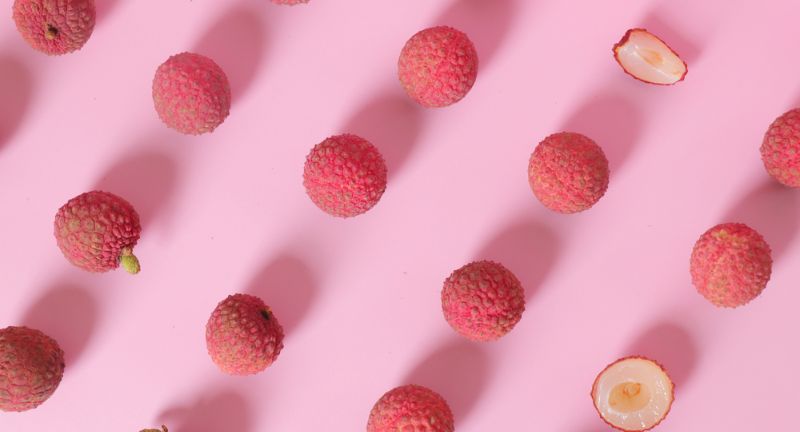
Shutterstock
The natural world is not just a source of sustenance but also a gallery of spectacular beauty, offering an array of foods that dazzle the senses and challenge our perceptions of what is edible. From the ethereal glow of bioluminescent plankton to the vibrant swirls of Romanesco broccoli, nature’s palette is as diverse as it is delicious. These foods are not merely nourishments but are works of art, each with unique properties that enhance both their visual appeal and culinary value. They invite us to explore the culinary arts with a sense of wonder and excitement, proving that eating can be an aesthetic experience as much as a gustatory one. This list celebrates the beauty and diversity of the most visually stunning foods from around the world, each a testament to the wonders of nature and human ingenuity in cultivation and preparation.
Dragon Fruit (Pitaya)
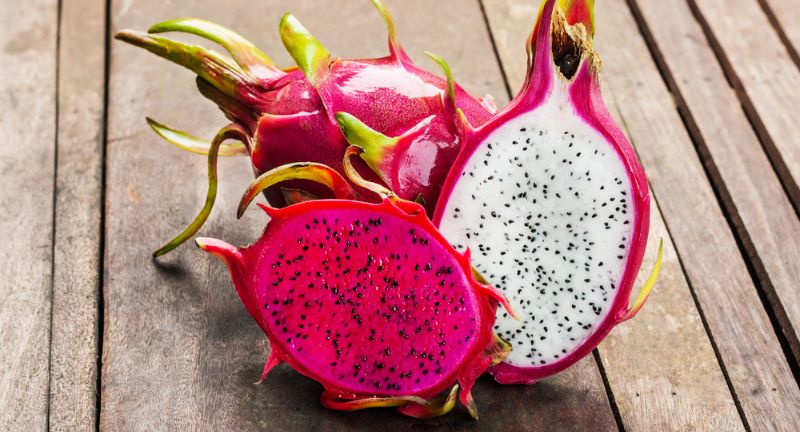
Shutterstock
Dragon fruit, or pitaya, is famous for its vibrant pink or red skin and speckled, kiwi-like flesh, which makes it appear almost otherworldly. Native to Central America but now grown in many tropical regions, it’s a favorite for its mild, sweet taste and numerous health benefits. The fruit is low in calories but packed with vitamins, antioxidants, and fiber, making it a popular choice for smoothies and desserts. Its unique look and refreshing taste make dragon fruit a striking addition to any fruit platter or dish.
Romanesco Broccoli
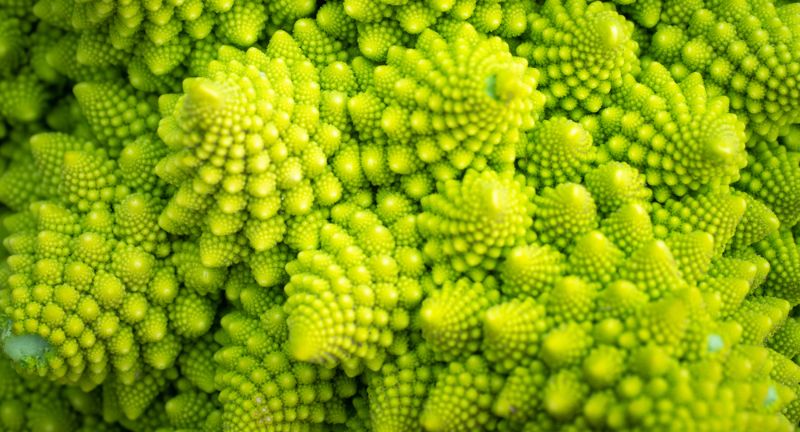
Shutterstock
Romanesco broccoli is not only a visual marvel with its naturally occurring fractal patterns but also a culinary delight, known for its nutty flavor that stands out from traditional cauliflower or broccoli. Its striking green color and spiral florets make it as much a centerpiece on the plate as a nutritious vegetable. Romanesco is rich in Vitamin C, Vitamin K, fiber, and carotenoids, supporting good health with its antioxidant properties. It can be cooked in various ways, including roasting, steaming, or even eaten raw in salads, adding crunch and visual interest.
Passion Fruit
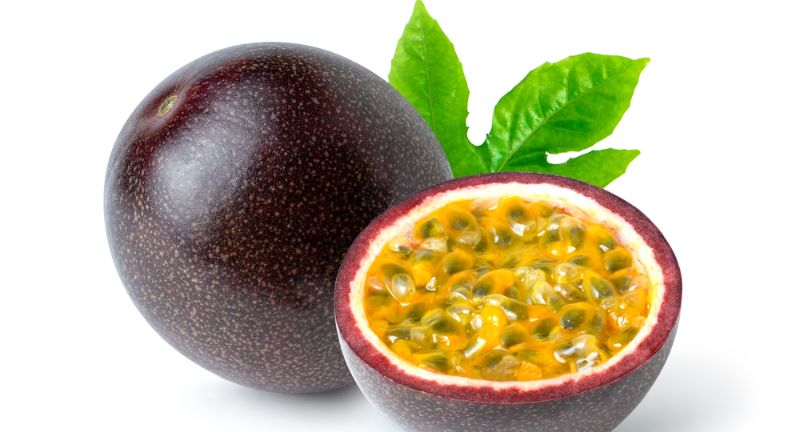
Shutterstock
Passion fruit is distinguished by its round to oval shape and a tough outer rind that encloses a mass of seeds surrounded by juicy, aromatic pulp. The interior, with its bright orange color and sweet-tart flavor, is often used to enhance the taste of drinks, desserts, and sauces. Rich in vitamins A and C, potassium, and dietary fiber, passion fruit supports digestive health and boosts immunity. Its intense aroma and strong flavor make it a popular ingredient in juices and smoothies, providing a tropical flair.
Starfruit (Carambola)
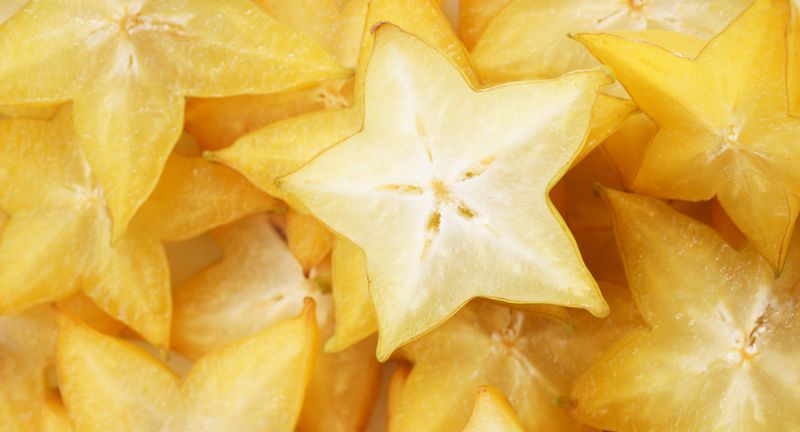
Shutterstock
Starfruit, or carambola, is a tropical fruit native to Southeast Asia, celebrated for its distinctive star shape when cut crosswise. The entire fruit is edible, including its waxy, golden-yellow skin. It offers a crisp texture and a sweet and sour flavor that makes it a refreshing addition to salads, desserts, and drinks. Starfruit is also packed with antioxidants, vitamin C, and potassium, making it beneficial for heart health and boosting immune function.
Blue Java Banana

Shutterstock
The Blue Java Banana, known for its unusual blue-tinged peel when unripe and its creamy texture that resembles ice cream, is a unique variety of banana. It is often referred to as the “ice cream banana” due to its sweet flavor and consistency that is similar to vanilla ice cream. This banana variety is hardy, resistant to cold, and can grow in a variety of climates, making it popular in parts of Hawaii and Southeast Asia. Beyond its distinctive taste and texture, the Blue Java Banana is also nutritious, providing a good source of potassium, dietary fiber, and vitamins.
Kiwi

Shutterstock
Kiwi is a small fruit that packs a big nutritional punch, with its bright green or golden flesh that’s dotted with black seeds and surrounded by a fuzzy brown peel. Originating from China and later cultivated in New Zealand, where it was named after the kiwi bird, this fruit is beloved for its sweet and tangy flavor. Kiwis are rich in vitamins C and K, dietary fiber, and antioxidants, making them great for boosting immune health and aiding digestion. They are commonly eaten raw, added to salads, or used in desserts, and their vibrant green color adds a splash of brightness to dishes.
Buddha’s Hand

Shutterstock
Buddha’s Hand is a fascinating citrus fruit, known for its segmented, finger-like sections that resemble a human hand. Originating from Northeastern India and China, this fruit is primarily used for its aromatic peel and the zest it provides, rather than traditional fruit segments. The zest is used to flavor desserts, cocktails, and savory dishes, and the fruit itself is often used as a natural air freshener due to its pleasant lemon scent. Rich in vitamin C, Buddha’s Hand is not only a conversation starter but also a healthful addition to a culinary repertoire.
Rainbow Corn

Shutterstock
Rainbow Corn, or Glass Gem Corn, features kernels that shimmer in a multitude of colors like a handful of brightly colored jewels. This variety of corn became popular due to its stunning appearance and the revival of interest in heirloom crops. Each ear of corn is unique, displaying a spectrum of colors due to the genetic diversity of its seeds. Not only a visual delight, but Rainbow Corn is also used in a variety of culinary ways, including popcorn and cornmeal, bringing both color and nutrition to the table.
Purple Sweet Potato
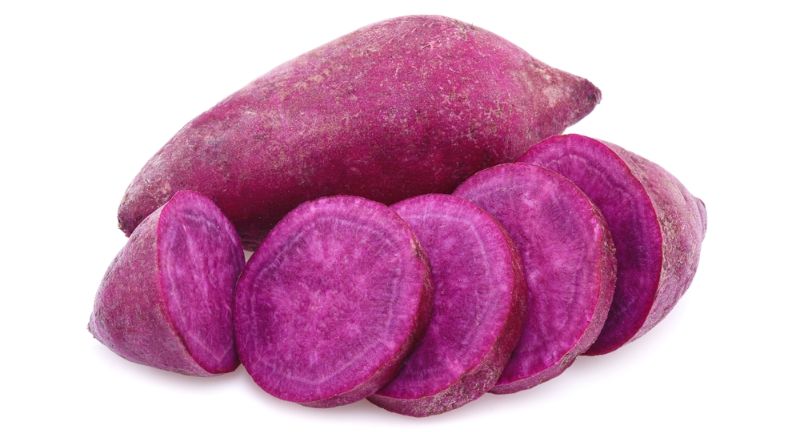
Shutterstock
Purple Sweet Potato, with its vivid purple flesh, is a visually stunning and nutritious root vegetable that adds a pop of color to any dish. Originally from the Americas, it is now widely grown in parts of Asia and the United States. The vibrant color comes from anthocyanins, powerful antioxidants that are thought to provide anti-inflammatory benefits. It is versatile in cooking, excellent in both savory dishes, like soups and stews, and sweet dishes, such as pies and desserts.
Rambutan
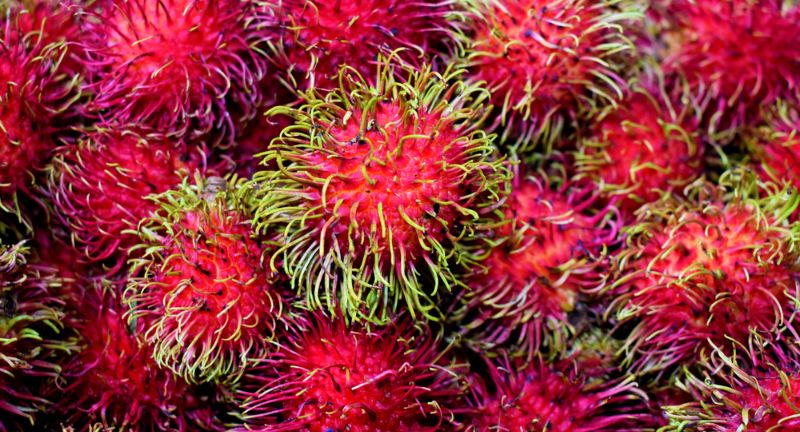
Shutterstock
Rambutan is a tropical fruit native to Southeast Asia, recognizable by its hairy appearance, which gives it a slightly intimidating yet intriguing look. The outer skin is reddish and covered with spiky hairs, but inside lies a juicy, translucent flesh that is sweet and slightly tart, similar to a lychee. Rambutan is rich in vitamin C, manganese, and smaller amounts of B vitamins, making it beneficial for overall health. This fruit is often eaten fresh, used in fruit salads, or canned for extended preservation.
Physalis (Cape Gooseberry)
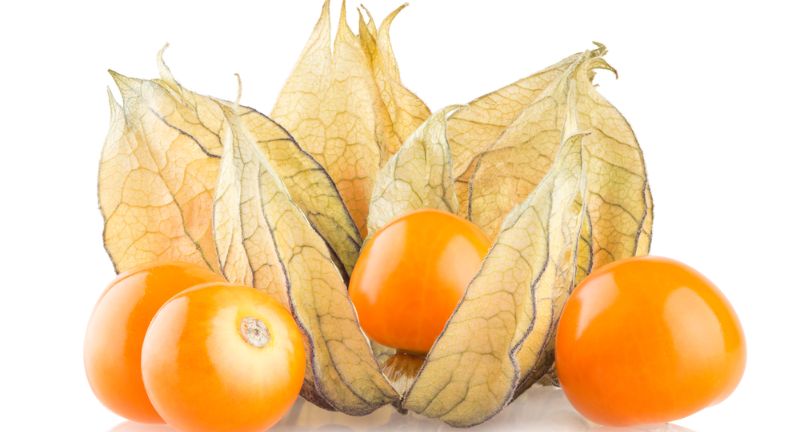
Shutterstock
Physalis, commonly known as Cape gooseberry, is not only known for its delicious, tangy fruit but also for its distinctive lantern-like husk. When ripe, the fruit inside is bright yellow and sweet with a tomato-like consistency and a burst of citrusy flavor. It is high in vitamins A and C, antioxidants, and other nutrients that promote immune health and vision. Physalis can be eaten raw, used in desserts, or made into preserves, adding a unique flavor and nutritional boost to various dishes.
Candy Cane Beets
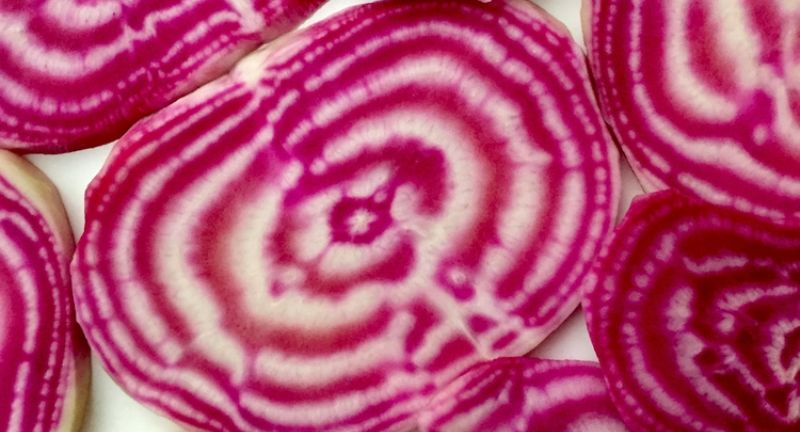
Shutterstock
Candy Cane Beets, also known as Chioggia beets, are notable for their striking red and white striped flesh that appears when sliced. Originating in Italy, these beets offer a sweet flavor that is milder than regular red beets. They are a fantastic source of fiber, folate, and potassium, helping to support heart health and digestion. When cooked, their unique coloring fades slightly, but they still make a visually impressive addition to salads and side dishes.
Mangosteen

Shutterstock
Mangosteen is often referred to as the “queen of fruits” and is celebrated for its lush, juicy texture and complex flavor profile that hints at peach, vanilla, and strawberry. This tropical fruit has a thick, hard purple rind on the outside but houses soft, fragrant segments inside that are bright white. Mangosteen is rich in antioxidants, particularly xanthones, which have anti-inflammatory properties. This exotic fruit is primarily consumed fresh and is often used in desserts and cocktails for its sweet and tangy flavor.
Pitahaya (Yellow Dragon Fruit)

Shutterstock
Pitahaya, or yellow dragon fruit, is a close cousin to the more widely known red-skinned dragon fruit but stands out with its vibrant yellow peel and white pulp filled with tiny black seeds. Its flavor is slightly sweeter than the red variety, with a taste that’s often described as a cross between a pear and a kiwi. This fruit is not only a visual delight but also packed with vitamins, minerals, and antioxidants that support digestion and immune health. Yellow dragon fruit makes an excellent base for smoothies, fruit salads, or can be enjoyed on its own for a refreshing treat.
Durian
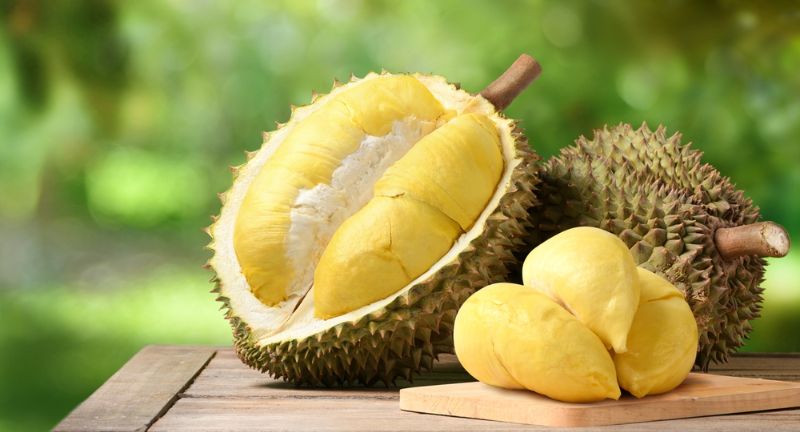
Shutterstock
Durian, widely known and often controversial due to its strong aroma, is beloved in many parts of Asia where it is hailed as the “king of fruits.” The fruit’s smell is so pungent that it’s banned in some public spaces, but its custard-like flesh is cherished for its deep, complex flavor that combines sweet, savory, and creamy elements. Durian is nutritionally dense, packed with fats, protein, and calories, making it a substantial energy booster. It is often eaten fresh, used in traditional sweet dishes, or even incorporated into savory recipes, where its richness enhances the dish’s depth of flavor.
Lychee

Shutterstock
Lychee, a tropical fruit native to the Guangdong and Fujian provinces of China, has a rough, leathery skin that peels away to reveal a translucent white fruit. The fruit is known for its sweet and floral flavor, making it popular in desserts, cocktails, and as a fresh snack. Rich in vitamin C, lychee provides a significant boost to the immune system, helping to fend off colds and flu. The fruit’s distinct appearance and refreshing taste make it a favorite during the summer months, particularly in Asian cuisine.
Horned Melon (Kiwano)
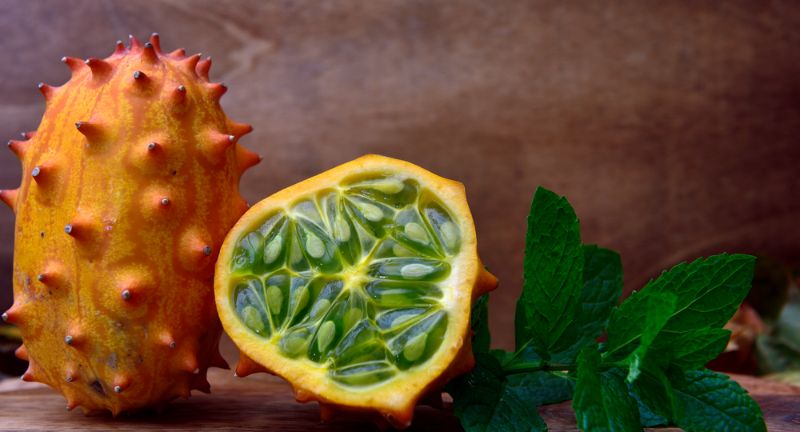
Shutterstock
Horned melon, also known as kiwano, is notable for its vibrant orange skin covered in spiky projections. Inside, the fruit contains a green, jelly-like flesh with a refreshing cucumber-like taste, which makes it a popular addition to salads, desserts, and drinks. This exotic fruit is native to Africa but is now grown in other parts of the world, including California and New Zealand. Rich in vitamins C and A, as well as potassium and antioxidants, kiwano is not only a visual spectacle but also a powerhouse of nutrition.
Black Radish
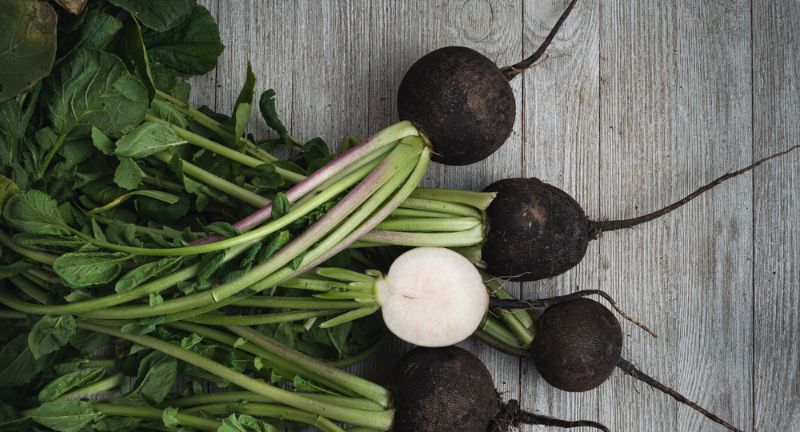
Shutterstock
Black radish stands out with its striking black exterior and crisp, spicy white interior that can be more pungent than the common red radish. This root vegetable is often used in traditional medicine for its ability to stimulate bile function and support liver health. It can be eaten raw, pickled, or cooked, and is especially popular in Eastern European cuisine. Black radish is rich in vitamin C and other antioxidants, making it a beneficial addition to detox diets and winter meals.
Soursop
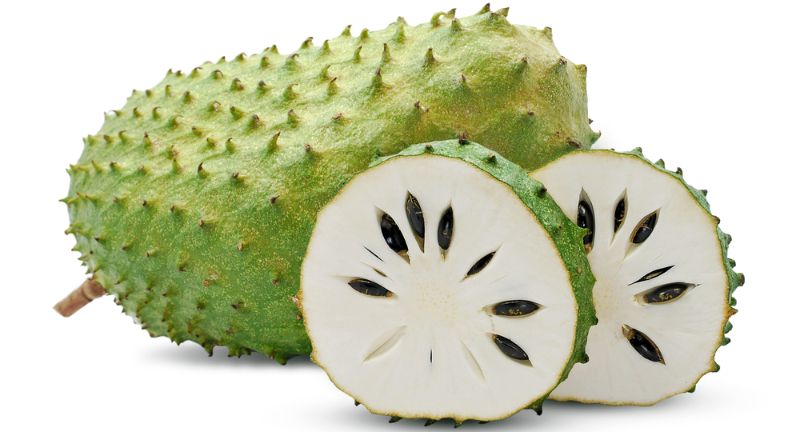
Shutterstock
Soursop, also known as graviola, is a fruit with a spiky green exterior and a soft, fibrous interior that delivers a flavor reminiscent of strawberries and apple with citrus notes. This tropical fruit is not only celebrated for its distinctive taste but also for its medicinal properties, including potential anti-cancer benefits. Soursop is commonly consumed as a juice or smoothie in Latin America and is also used in desserts. Its nutrient profile includes vitamins C, B1, and B2, making it a healthy choice for boosting vitality and enhancing overall health.
Miracle Berry
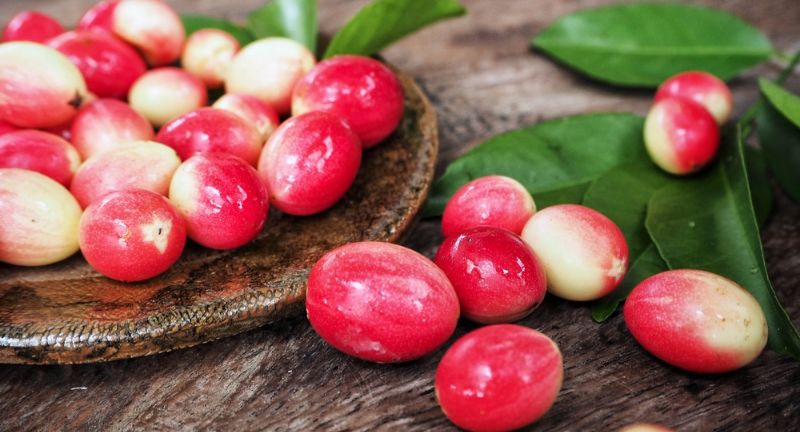
Shutterstock
Miracle berry is a remarkable fruit that originates from West Africa and is famed for its ability to alter taste perceptions, turning sour flavors into sweet. This effect is due to miraculin, a protein in the fruit that binds to the taste buds. The berry itself is small and red, with a mild taste, but its impact comes after the berry is consumed and acidic substances thereafter taste sweet. It’s popular at “flavor-tripping” parties where participants experience common foods in a new way. Beyond its novelty, the miracle berry is being researched for its potential to help those with diabetes and other conditions that restrict sugar intake.
Pineberry

Shutterstock
Pineberries look like inverted strawberries, with white flesh and red seeds, and they taste remarkably like pineapples. This rare fruit is actually an old variety of strawberry that has been brought back from near extinction. Pineberries are smaller and less sweet than regular strawberries but offer a deliciously aromatic and fruity flavor. They are often used in gourmet dishes or desserts to add a unique twist to traditional strawberry recipes and provide a surprising and delightful experience for the palate.
Akebi Fruit
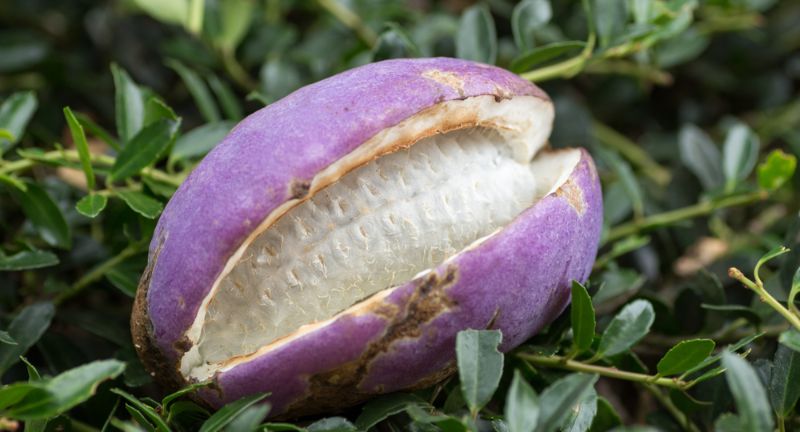
Shutterstock
Akebi fruit, native to Japan, is known for its striking purple pod that splits open naturally to reveal a cluster of translucent white fruit segments inside. These segments are encased in a jelly-like substance and have a sweet, mild flavor. Akebi is typically eaten raw, with the seeds removed, and it’s a seasonal delicacy appreciated during the short period it is available. The fruit is not only prized for its taste but also for its aesthetic appeal, often used in traditional Japanese decorations and cuisine.
Sea Grapes (Green Caviar)

Shutterstock
Sea grapes, also known as green caviar, are a type of edible seaweed that grows in the coastal regions of the Pacific Islands. These small, green pearls closely resemble caviar in appearance and provide a unique popping sensation when eaten. They are typically served raw, often as a garnish or an accompaniment to sushi, adding a burst of salty, ocean flavor. Sea grapes are rich in minerals, vitamins, and antioxidants, making them not only a culinary delight but also a healthful addition to the diet.
Chayote
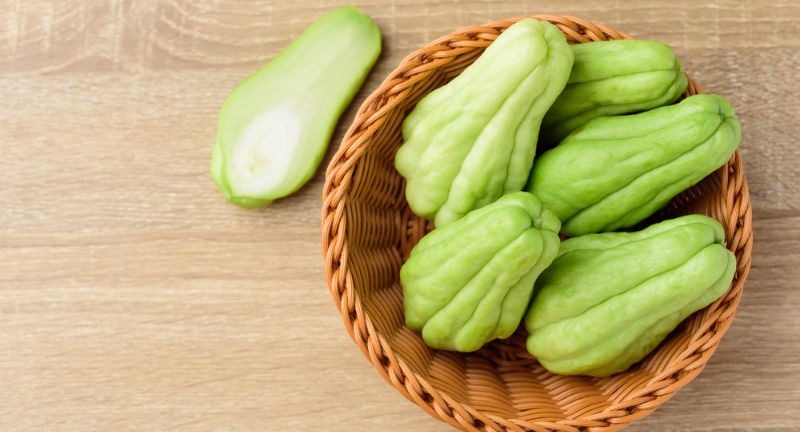
Shutterstock
Chayote, a member of the gourd family, is a versatile fruit often used as a vegetable in a variety of culinary applications. This pale green, pear-shaped produce has a mild, crisp texture that holds up well to cooking, making it suitable for both sweet and savory dishes. It can be sliced for salads, stuffed, mashed, or fried, and its subtle flavor absorbs spices and seasonings beautifully. Chayote is not only a staple in many Latin American diets but also gaining popularity worldwide for its nutritional benefits, including high fiber, vitamin C, and amino acids.
Ugli Fruit
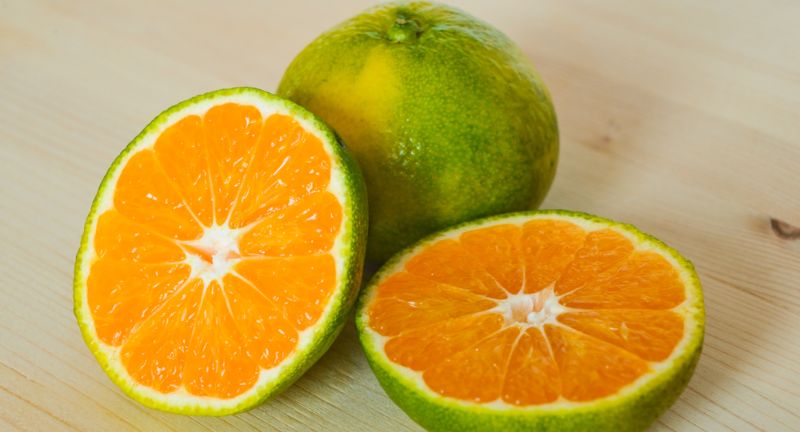
Shutterstock
Ugli fruit is a unique hybrid between a grapefruit, an orange, and a tangerine, originally discovered in Jamaica and known for its loose, rough skin which is not conventionally pretty but hides a sweet, tangy citrus fruit inside. Its name reflects its somewhat ‘ugly’ appearance, but the taste is anything but, offering a sweeter and less bitter experience than a grapefruit. Ugli fruit is extremely juicy and can be used similarly to other citrus fruits in cooking, juicing, or just peeling and eating. It’s rich in vitamin C and fiber, making it a healthy choice for boosting immunity and aiding in digestion.
Dulse
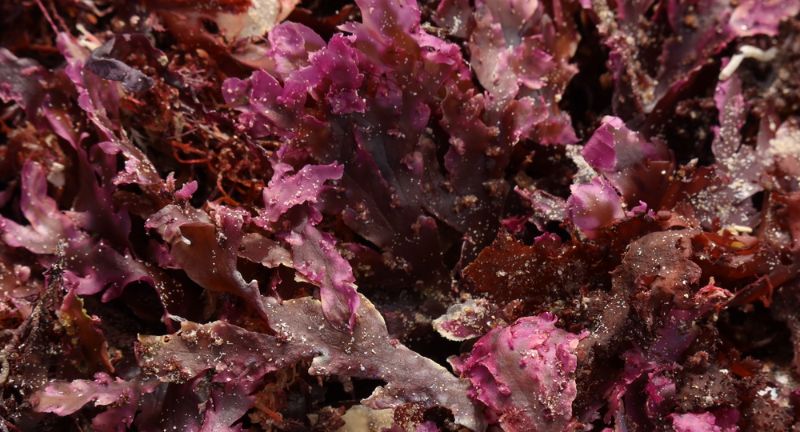
Shutterstock
Dulse is a type of red algae that grows in the cool waters along the Atlantic coast of Canada and Europe, notable for its deep red leaves and a slightly spicy and salty flavor. It is commonly used dried or fresh in salads, soups, and chowders, and is highly prized for its ability to add a rich, umami flavor to dishes. When fried, dulse transforms into a crispy snack with a bacon-like taste, making it a popular choice among vegetarians and health-conscious eaters alike. This seaweed is not only a flavor enhancer but also a powerhouse of nutrients, packed with protein, fiber, and vitamins.
Turmeric Root
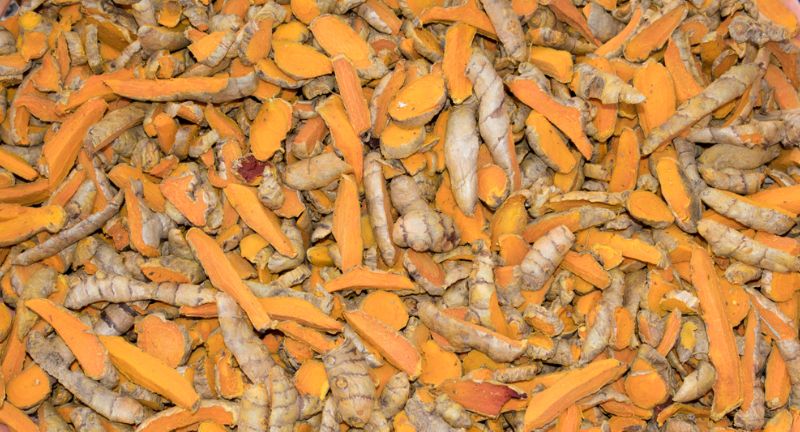
Shutterstock
Turmeric root, often seen in its dried, powdered form, is bright orange and full of earthy, bitter flavors. Known primarily for its anti-inflammatory and antioxidant properties, it’s a staple in Indian cuisine, contributing to the characteristic color and flavor of curries. The root can be used fresh, similar to ginger, grated into dishes, or made into a tea. Its active ingredient, curcumin, has numerous health benefits, including supporting joint health, maintaining inflammatory responses within normal ranges, and supporting brain and cardiovascular health.
Monstera Deliciosa Fruit

Shutterstock
Monstera deliciosa, also known as the Swiss cheese plant, produces fruit that is as unusual as its perforated leaves, often taking up to a year to mature fully. When ripe, the fruit looks like a green cob of corn with hexagonal scales which, when peeled away, reveal a creamy and deliciously fragrant flesh that tastes like a combination of pineapple and banana. The fruit is high in potassium and vitamin C, making it not only a tasty treat but also a healthy one. Due to its exotic appearance and sweet, tropical flavor, it’s highly sought after by culinary enthusiasts looking to add a unique touch to their dishes.
Pink Pearl Apples
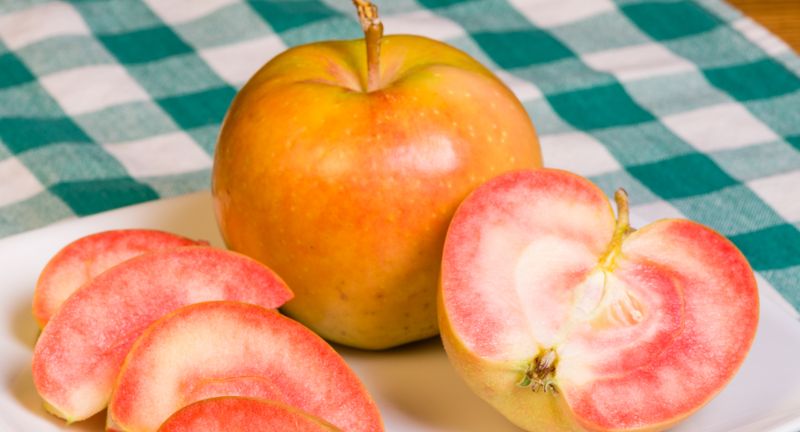
Shutterstock
Pink Pearl apples are a stunning variety with a surprising bright pink flesh beneath their unassuming exterior. Developed in the 1940s in California, these apples are a treat for both the eyes and the palate, offering a tart flavor that’s perfect for baking and cooking. The apples are not only beautiful but also a good source of fiber and vitamin C. They make a spectacular addition to salads and desserts, where their vibrant color can truly shine, making any dish visually more appealing.
Tiger Nuts

Shutterstock
Tiger nuts, despite their name, are not nuts but tubers that grow below the soil’s surface. They are chewy, sweet, and have a flavor somewhat reminiscent of almonds and coconut. Originally from Africa, tiger nuts are often used in Spanish horchata and are known for their high fiber content, magnesium, and iron. These small, wrinkled tubers are gaining popularity as a gluten-free, nut-free, and dairy-free option for snacks and milk alternatives, providing versatile and healthful benefits.
Conclusion
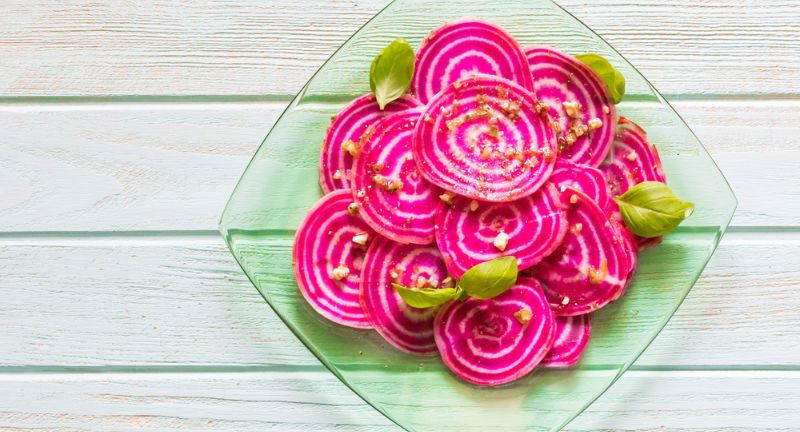
Shutterstock
As we conclude our exploration of the most visually stunning foods from around the world, it becomes evident that the beauty of these foods enhances our dining experience, adding depth and delight to every meal. These extraordinary examples remind us that food is not only essential for sustenance but also a source of joy and inspiration. They encourage culinary experimentation and invite us to appreciate the aesthetic dimensions of dining. By integrating these beautiful foods into our diets, we enrich our lives with colors, flavors, and textures that elevate eating to an art form. Ultimately, this journey through nature’s most beautiful foods invites us to look closer and rediscover the wonder in our everyday meals.
Related Topics:

More From Lifestylogy
-


20 Jewels That Appreciate The Most Over The Years –…
-


Comical Walmart Photos Captured
-


The 21 Worst Things You Can Do As A Houseguest
-


Curiosities From The Past and Present That Will Blow Your…
-


15 Child Stars All Grown Up
-


Awkward Teen Photos of Hot Celebrities
-


Perfectly Timed Photos
-


Sample Test Quiz
-


30 Superfoods That Have The Biggest Impact On Your Health